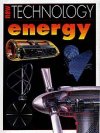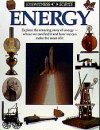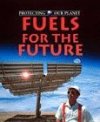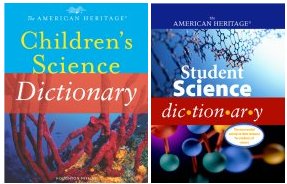Power of the Wind Additional Information
The National Wind Technology Center has a Web site at www.nrel.gov/wind/ (National Renewable Energy Laboratory). Additional information about wind-power
technology can be found at www.eia.doe.gov/kids/energyfacts/sources/renewable/wind.html and at www.eere.energy.gov/windandhydro/(U.S. Department of Energy).
You can find out how a wind turbine works at www.windpower.org/en/kids/(Danish Wind Industry Association).
You can learn more about the American Wind Energy Association at www.awea.org/default.htm.
Information about the Cape Wind Project in Massachusetts can be found at www.capewind.org/(Cape Wind Project).
Perkins, Sid. 2004. Change in the weather? Wind farms might affect local climates. Science News 166(Oct. 16):246. Available at http://www.sciencenews.org/articles/20041016/fob7.asp.
Raloff, Janet. 2001. Power harvests. Science News 160(July 21):45-47. Available at http://www.sciencenews.org/articles/20010721/bob14.asp.
Sohn, Emily. 2004. Cold house, hot house, green house. Science News for Kids (Oct. 20). Available at http://www.sciencenewsforkids.org/2004/10/cold-house-hot-house-green-house-2/.
______. 2003. Electricity’s Spark of Life. Science News for Kids (Oct. 1). Available at http://www.sciencenewsforkids.org/2003/09/electricitys-spark-of-life-2/.
Science fair projects:
Would increasing the number of blades on a windmill generate more electricity? See http://www.sciencenewsforkids.org/articles/20040107/ScienceFairZone.asp.
Does a little bit of extra turbulence at the surface of an airfoil increase turbine efficiency? See http://www.sciencenewsforkids.org/articles/20031210/ScienceFairZone.asp.
Additional information and wind-power project ideas can be found at www.kidwind.org/ and www.kidwind.org/materials/sciencefairideas.html (KidWind Project).
For teachers:
A wind energy teacher’s guide can be found at www.awea.org/pubs/documents/TeachersGuide.pdf (American Wind Energy Association). See also www.fi.edu/tfi/units/energy/windguide.html (Franklin Institute).
Lesson plans and other materials from the KidWind Project in Massachusetts are available at www.kidwind.org/materials.html(KidWind Project).
Renewable energy materials and resources can be found at www.nrel.gov/education/lessons.html (National Renewable Energy Laboratory).
Books recommended by SearchIt!Science:
 |
Energy — Nigel Hawkes
Published by Twenty-First Century Books/Millbrook Press, 1994.
Ever since people first discovered fire, they’ve been using Earth’s energy for light, heat, and cooking. We haven’t always used this energy wisely, though, and Earth may run out of important energy resources such as oil, coal, and gas. The solution lies not only in conserving these resources but also in finding new sources of energy. With large color photographs, diagrams, and drawings, this book features short explanations of some of those new sources. Technology is being used to capture usable energy from biomass and atomic power. An introduction to how we might get energy resources from outer space is offered. |
 |
Energy — Jack Challoner
Published by Dorling Kindersley, 1993.
A toad jumps from place to place. A volcano spews ash and steam. A bolt of lightning crackles across the dark sky. All of these images are examples of energy at work. What is energy, and where does it come from? How can we make it work for us? What will happen if our sources of energy run out? And how can we make the most of the energy we have? These are some of the questions this book sets out to answer with the help of large, colorful photographs and illustrations. Find out about different kinds of energy, such as muscle energy or energy produced from food, or energy that comes from the sun. Investigate how we harness wind, water, and heat to create energy. Look at how energy travels, how it’s measured and generated. Thermodynamics, electromagnetism, and electricity are some of the other topics discussed. |
 |
Fuels For The Future — Steve Parker
Published by Raintree Steck-Vaughn, 1998.
Without fuels we would not be able to heat our homes, drive cars, or power all of our machinery. In order to use fuels such as coal, oil, and natural gas, we should also learn how to conserve them before they are used up. This book gives you the inside information on our wide world of fuels, detailing the kinds most used as well as other energy sources, such as solar, hydroelectric, and geothermal power. The book takes a look around the world to see how various areas cope with their depleting supplies of fuels. It also traces the history of fuel production from prehistoric times through the present period. Detailed information, as well as extraordinary maps and charts, describe the facts about fuel clearly and accurately. |
Power Words
nonrenewable Relating to a natural resource, such as oil or iron ore, that cannot be replaced once it has been used. Compare renewable.
renewable Relating to a natural resource that is either never used up or that can be replaced by new growth. Sunlight is an example of a renewable resource that can never be used up, and wood is an example of one that can be replaced by new growth. Compare nonrenewable.
turbine A machine that uses the energy of a moving fluid, such as water, steam, or gas, to make something turn in a circular motion. Windmills and jet engines are types of turbines.
Copyright © 2002, 2003 Houghton-Mifflin Company. All rights reserved. Used with permission.
